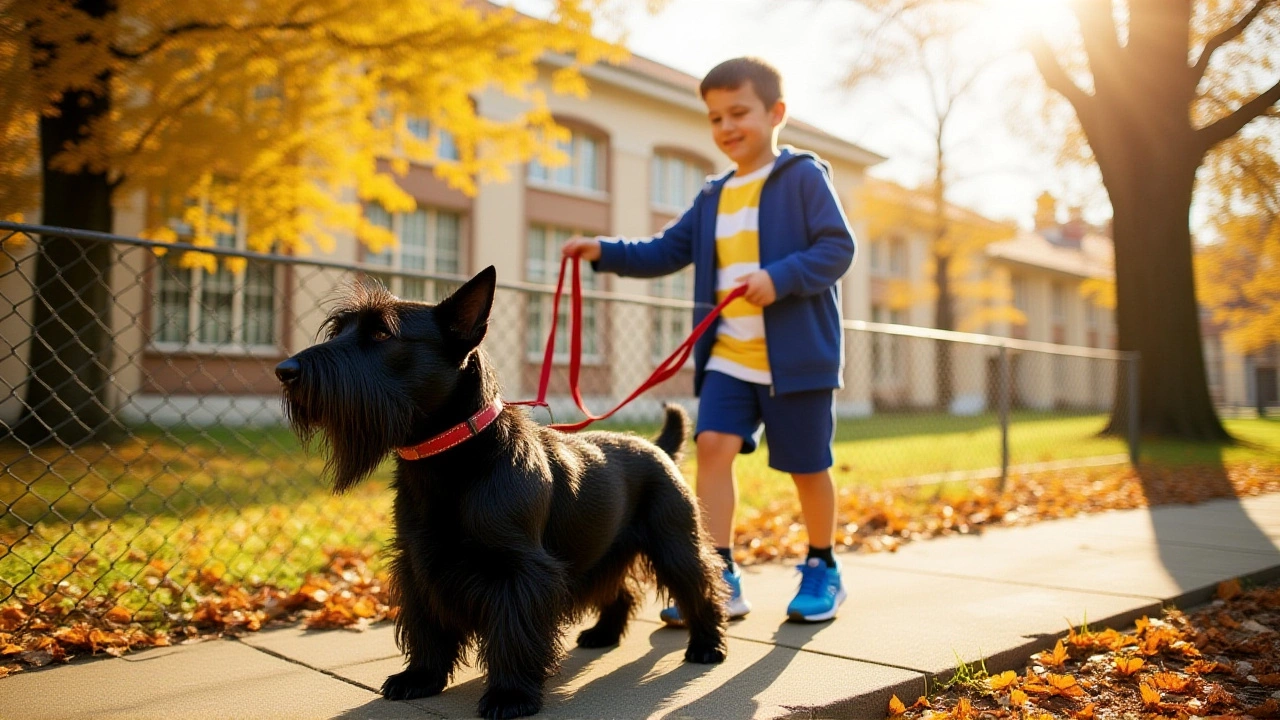On National Black Dog Day this year, shelters across the U.S. celebrated a quiet victory: the adoption gap between black dogs and lighter-coated pets has shrunk from 50% longer stays in 2015 to just 15% in many areas. But behind the numbers, a deeper story unfolds — one of stubborn stereotypes, regional inequality, and the quiet power of visibility. Black Dog Syndrome isn’t just a myth anymore. It’s a measurable pattern, and the fight to dismantle it is far from over.
Progress in Plain Sight
At Bright Futures Animal Shelter in Portland, Oregon, the turnaround was dramatic. After launching their "Black is the New Bark" campaign in early 2023, black dog adoptions jumped 78% within a year. Staff noticed something simple but powerful: better lighting, angled photos, and highlighting each dog’s personality — not just their coat — made all the difference. "We stopped treating them like a group and started showing them as individuals," said shelter director Lena Torres. "One dog, Rocco, had a goofy grin that made people laugh. Once we showed that, he was gone in 48 hours."
The American Veterinary Medical Association joined forces with Start Seeing Black Dogs in 2023 to extend outreach beyond shelters. Now, over 1,200 veterinary clinics nationwide display posters explaining Black Dog Syndrome and offer one free wellness exam to new adopters of black dogs. The goal? To connect with people who might never walk into a shelter but trust their vet.
The Double Stigma in Rural America
But not all shelters are seeing the same results. In rural counties across Kansas, Mississippi, and West Virginia, black dogs — especially pit bull mixes — are still euthanized at nearly twice the rate of lighter-colored animals, according to the Start Seeing Black Dogs 2025 Update. "It’s not just color," explains Dr. Marcus Ruiz, a shelter veterinarian in rural Missouri. "It’s breed stigma layered on top of color bias. People see a black pit bull and assume aggression. They don’t see the dog. They see a stereotype."
PAWS (Progressive Animal Welfare Society) confirmed this trend in their September 2024 report, noting black dogs and cats are 33% more likely to be euthanized due to overcrowding — not because they’re less adoptable, but because they’re less *seen*. "We have 12 black dogs right now," said PAWS director Helen Cho. "Five of them have been here over six months. One, a sweet terrier mix named Mochi, was adopted twice — and returned both times because the owners said, ‘I just didn’t feel connected to her.’ She’s got a heart of gold. The color didn’t change. The perception did."
Myths, Photos, and the Power of Perception
Photography plays a bigger role than most realize. GAP Queensland, Australia’s greyhound adoption program, pointed out that black dogs often appear as "shadows" in shelter photos — underexposed, indistinct, uninviting. "It’s not malice," said adopter Chris from Brisbane. "It’s just bad lighting. My dog Judy was in a corner, backlit. She looked scary. When I finally met her in person, she licked my hand and fell asleep on my lap. She’d been there seven months."
Studies cited by Kinship.com suggest people subconsciously associate black coats with aggression or sadness. One 2023 survey found 33% of shelter dogs are black — yet only 18% of adoptions. "There’s a kind of overload," says animal behaviorist Dr. Naomi Ellis. "When you walk into a kennel and see seven black dogs staring back, your brain thinks, ‘Too many. Pick something different.’ It’s not about the dogs. It’s about cognitive overload."

What’s Next: A National Strategy for 2026
Start Seeing Black Dogs has unveiled five major initiatives set to launch by October 2026:
- Rural Shelter Outreach Program — Mobile adoption units and training for staff in underserved areas
- Black Dog Photography Workshops — Free virtual training for shelters on lighting, angles, and editing
- Corporate Adoption Partnerships — Pet-friendly companies sponsor adoptions for employees
- Black Dog Transportation Network — Relocating dogs from high-euthanasia shelters to regions with higher demand
- Youth Education Program — Curriculum for K-12 schools to teach about unconscious bias in pet adoption
Meanwhile, The Black Dog, the retail company, continues its partnership with NBCUniversal’s Clear The Shelters campaign — which has placed nearly 1.2 million pets since 2015. "We’ve been doing this since 2014," says CEO Daniel Reed. "It’s not marketing. It’s part of who we are."
Why This Matters Beyond the Shelter
This isn’t just about dogs. It’s about how we see the world — and who we choose to overlook. The same biases that make black dogs harder to adopt are mirrored in hiring, housing, and even how we judge people based on skin tone. "When you teach someone to see past a coat color," says Dr. Ellis, "you’re teaching them to see past assumptions. That’s the real win."
PAWS says it best: "Black cats and dogs are just as beautiful, loving, loyal, and deserving as any other pet." The data proves it. The hearts prove it. Now, the systems need to catch up.
Frequently Asked Questions
Why do black dogs take longer to adopt?
Studies show black dogs are often perceived as less friendly or more intimidating due to unconscious bias and poor photography in shelters. In 2023, one survey found 33% of shelter dogs were black, yet they accounted for only 18% of adoptions. The issue isn’t behavior — it’s perception. Better lighting, personality-focused profiles, and educational campaigns have proven they can overcome this bias.
Are black pit bulls affected more than other black dogs?
Yes. Black pit bulls and pit bull mixes face a "double stigma" — both breed discrimination and coat color bias. According to the 2025 Start Seeing Black Dogs Update, these dogs spend an average of 42% longer in shelters than other black dogs and are 2.1 times more likely to be euthanized in rural areas due to overcrowding and limited adoption interest.
What’s being done to improve black dog adoption rates?
Initiatives include free veterinary wellness exams for adopters, photography workshops to improve dark-coated pet images, corporate adoption sponsorships, and a new transportation network to move black dogs from high-euthanasia rural shelters to urban areas with higher adoption demand. Bright Futures Animal Shelter saw a 78% adoption increase after launching a personality-driven campaign.
How does the "Clear The Shelters" campaign help black dogs?
NBCUniversal’s "Clear The Shelters" campaign, partnered with The Black Dog, has helped place nearly 1.2 million pets since 2015. While not exclusively focused on black dogs, the campaign’s national reach and media exposure have significantly increased visibility for dark-coated animals, especially during annual adoption events in August and October.
Can photography really make a difference in adoption rates?
Absolutely. A 2024 study by GAP Queensland showed black dogs photographed with proper lighting and close-up shots were adopted 62% faster than those in dim, distant shots. Many shelters now train volunteers in pet photography — a low-cost, high-impact tool that directly combats "black dog syndrome" by making these animals more visible and appealing.
What can I do to help black dogs get adopted?
Share photos of black dogs on social media — but make sure they’re well-lit and show personality. Volunteer at shelters to help with photography or walking dogs. If you’re adopting, consider a black dog — they’re often overlooked but just as loving. And if you see someone hesitating, remind them: color doesn’t define character. The right dog is the one who chooses you — not the one who fits a stereotype.
